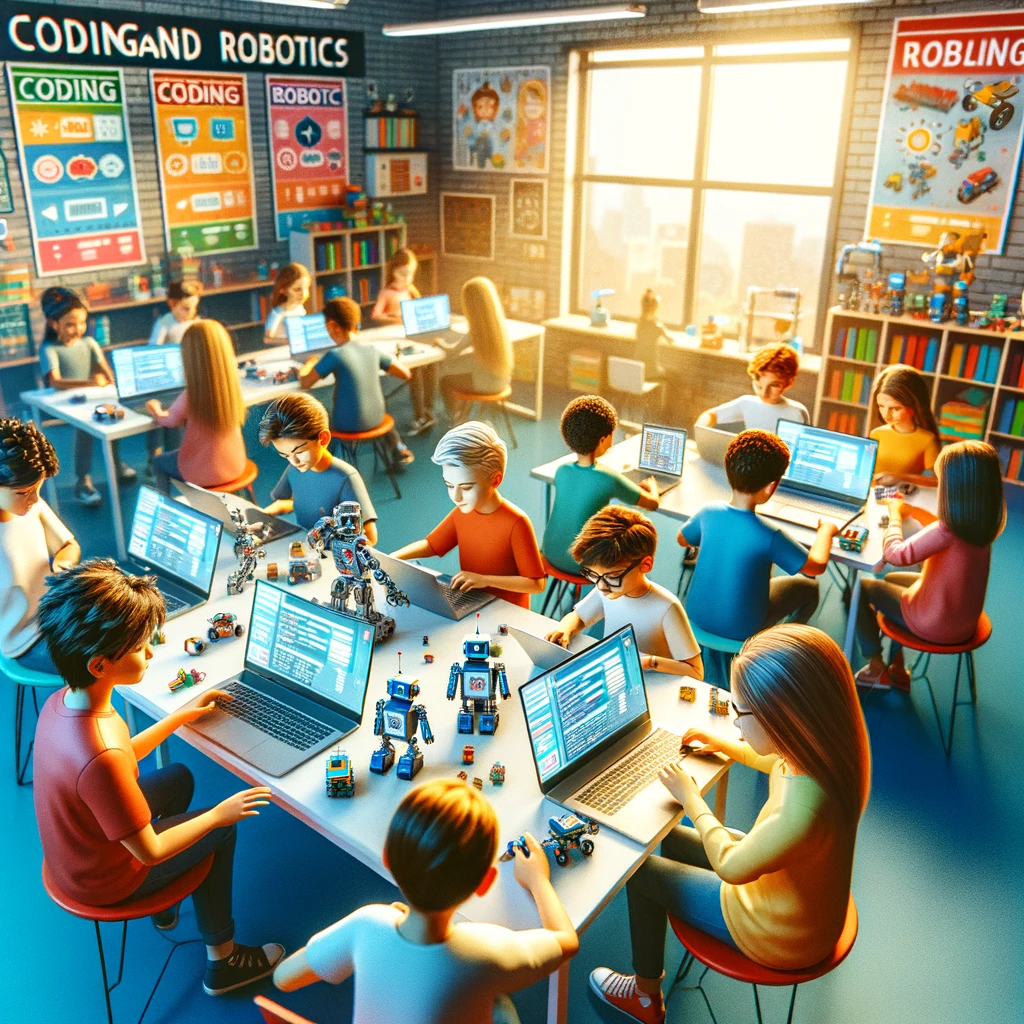
Ignite Young Minds: An Engaging Coding and Robotics Workshop for Kids
In the digital age, introducing children to the fundamentals of programming and robotics is not just a trend; it’s a necessity. These skills are crucial for their future academic and professional success. This blog explores how to create an engaging and educational coding and robotics workshop for kids, ensuring they gain valuable skills while having fun.
Why Coding and Robotics Matter
Before diving into the workshop details, it’s essential to understand why coding and robotics are important for kids. Coding teaches children how to think logically, solve problems, and develop computational thinking. Robotics, on the other hand, brings these concepts to life, allowing kids to see the tangible results of their code in action.
Workshop Goals
Introduce basic programming concepts.
Teach problem-solving skills through coding.
Demonstrate how coding translates into real-world applications using robotics.
Foster teamwork and collaboration.
Encourage creativity and innovation.
Getting Started
Welcome and Icebreakers: Start with a brief introduction and some icebreaker activities to make the kids comfortable.
Overview of Coding and Robotics: Explain what coding and robotics are, why they are important, and how they are interconnected.
Basic Coding Concepts
Interactive Presentation: Use visual aids and interactive elements to introduce basic coding concepts such as loops, conditionals, and variables.
Hands-On Activity: Provide tablets or laptops with a child-friendly coding platform like Scratch or Blockly. Walk them through creating a simple project, such as making a character move or change color.
Exploring Robotics
Robot Demonstration: Show a pre-built robot in action. Explain the different components, such as sensors, motors, and the microcontroller.
Building Simple Robots: Divide the kids into small groups and give each group a simple robot kit, like LEGO Mindstorms or VEX IQ. Guide them through assembling the basic structure of their robots.

Coding for Robotics
Connecting Code to Robots: Teach the kids how to write simple code that controls their robots. Start with basic commands like moving forward, turning, and stopping.
Challenge Activities: Create a series of challenges for the kids to solve using their robots. For example, navigating a maze, following a line, or avoiding obstacles.
Break Time
Allow kids to take a break, have some snacks, and socialize.
Advanced Coding Concepts
Conditional Statements and Loops: Introduce more advanced coding concepts that allow robots to make decisions based on sensor input.
Hands-On Practice: Let the kids modify their existing code to include these new concepts, enhancing their robots’ capabilities.
Capstone Project
Design and Build: Give the kids a final project to complete in their groups. This could be something like creating a robot that can follow a specific path or perform a simple task.
Presentation and Demonstration: Each group presents their project and demonstrates how their robot works. Encourage them to explain the code and the challenges they faced.
Wrap-Up and Q&A
Recap and Review: Summarize the key concepts covered in the workshop.
Q&A Session: Allow time for questions and discussions. Encourage the kids to share their experiences and what they learned.
Materials Needed
Tablets or laptops with internet access;Child-friendly coding platforms (Scratch, Blockly, etc.);Simple robot kits (LEGO Mindstorms, VEX IQ, etc.);Additional materials like sensors, motors, and building components;Projector and screen for presentations;Snacks and refreshments.
Educational Benefits
This workshop is designed to be both fun and educational. Here are some of the key benefits for the kids:
Enhancing Problem-Solving Skills
By working through coding challenges and troubleshooting their robots, kids develop strong problem-solving skills. They learn to approach problems methodically and think critically about solutions.
Fostering Creativity
Coding and robotics provide a platform for kids to express their creativity. They can design unique projects, come up with innovative solutions, and see their ideas come to life.
Encouraging Teamwork
Many of the activities in this workshop are designed to be completed in groups. This fosters collaboration, communication, and teamwork, as kids work together to achieve a common goal.
Building Confidence
Successfully completing coding projects and seeing their robots perform as expected boosts kids’ confidence. They gain a sense of accomplishment and realize their potential to create and innovate.
Preparing for the Future
Coding and robotics are becoming increasingly important in many fields. By introducing these concepts early, we prepare kids for future academic and career opportunities in technology and engineering.
Tips for Success
To ensure the workshop runs smoothly and the kids get the most out of it, keep these tips in mind:
Keep it Interactive: Kids learn best when they are actively engaged. Use interactive presentations, hands-on activities, and plenty of opportunities for them to experiment and explore.
Be Patient and Supportive: Coding and robotics can be challenging, especially for beginners. Be patient, provide support, and encourage the kids to keep trying, even if they encounter difficulties.
Make it Fun: Incorporate games, challenges, and creative projects to make the learning process enjoyable. The more fun the kids have, the more they will be motivated to learn.
Provide Clear Instructions: Ensure that all instructions and explanations are clear and easy to follow. Use simple language and visual aids to help kids understand complex concepts.
Encourage Questions: Create an environment where kids feel comfortable asking questions. Encourage curiosity and provide thorough answers to help them deepen their understanding.
Final Thoughts
A coding and robotics workshop for kids is a fantastic way to introduce them to the world of technology. It not only equips them with valuable skills but also fosters a love for learning and innovation. By following the structure and tips outlined in this blog, you can create an engaging and educational experience that will leave a lasting impact on the children who participate. Whether they’re navigating a maze with their robot or solving a coding challenge, the skills and confidence they gain will serve them well in the future.





[…] programs that focus on invention and innovation. Programs like STEM summer camps, after-school robotics clubs, and online coding courses can provide structured learning experiences that foster creativity and […]